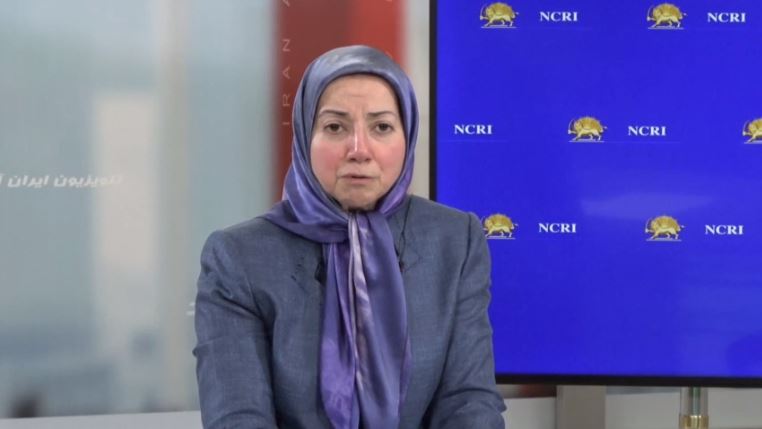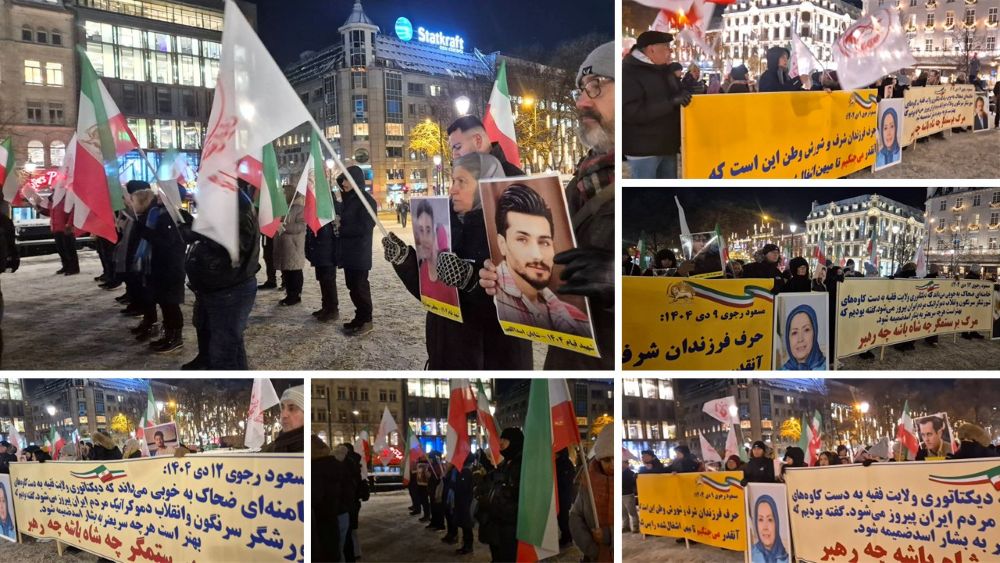NCRI conference reveals new info on protests in Iran
On November 22, the National Council of Resistance of Iran (NCRI) held an online press conference on the ongoing protests in Iran, which were triggered after the Iranian regime implemented a sudden increase on the prices of gasoline. The protests have spread to more than 160 cities. The regime’s security forces have murdered more than 250 protesters so far and has imposed a near-total blackout on internet communications.
The NCRI provided details on the protests and how it has affected the regime. Contrary to claims mad by several high-profile regime officials, the protests continue in many cities, and the people are calling for regime change and the ouster of the mullahs from Iran.
NCRI conference, Picture of the current situation in Iran.
At the beginning of the NCRI conference, Ms. Dowlat Nowrouzi, the Representative in the UK for the National Council of Resistance of Iran (NCRI) said:

The protests began on November 15 and spread with stunning speed. The regime engaged in a bloody suppression and completely blocked the internet on November 17 to prevent the news on the scale of the protests and the scope of its brutal crackdown.
She emphasized that contrary to the claims by the regime, despite the massive crackdown, protests and clashes are continuing in different parts of the country. In many cities, the people have repelled the IRGC’s onslaught and forced them into retreat. One obvious reason for this is that after eight days, the regime is still terrified of resorting the internet.
The MEK has, nevertheless, succeeded in getting significant information on the uprising. Some are as follows:
- Protests occurred in 148 cities.
- At least 251 have been killed. The MEK has identified 85 victims. Most were shot in the head and the chest by snipers. Some as young as 13 are among them.
- 3,700 have been wounded.
- 7,000 have been arrested. Fars News agency reported on the first day of the protests that 1,000 had been arrested.
The actual figures are much higher.
Ms. Nowrouzi noted that from the very first hour, the regime brought in all its suppressive forces, including the IRGC, the paramilitary Bassij, the Intelligence Ministry and plainclothes agents.
In Shiraz, Mahshahr and Kermanshah, the regime utilized tanks and armored personnel carriers. In Shiraz, it also fired on the crowd from helicopters.
The people attacked the regime’s centers, including IRGC and Bassij centers and affiliated centers. Regime officials and state-controlled media acknowledged that hundreds of IRGC centers, offices of Friday prayer leaders, Khamenei’s representatives and other suppressive agencies. IRGC Brig. Gen. Abdollah Ganji admitted, “The epicenter of the attacks demonstrated the level of violence and targeted rebellion.”
Characteristics of the uprising:
Despite the regime’s readiness to any potential reaction to the gasoline price hike, it failed to stop the spread of the uprising.
NCRI UK Representative summed up the characteristics of the uprising as follows:
- This shows that the balance of power between the people and the Iranian Resistance is shifting.
- While the uprising was prompted by the gasoline price hike, it quickly morphed into a nationwide and popular uprising.
- The slogans were from the very beginning political and directed at rejecting the entirety of the regime. The most prevalent slogans were “death to the dictator,” “death to Rouhani,” “death to Khamenei,” “leave Syria alone, think of us,” “neither Gaza, no Lebanon, my life only for Iran.” The slogans reflected what the MEK had been saying for many, many years.
- The speed with which the uprising spread was unprecedented. People’s anger was entirely directed at government agencies and institutions, particularly agencies affiliated with the IRGC and Khamenei’s office. The IRGC-affiliated newspaper wrote that the uprising had been organized and that the “rioters had been trained.” Those involved in the uprising were tasked with “attacking sensitive military and law-enforcement centers,” it wrote.
The uprising had a dual characteristic. All the impoverished sectors were involved. It was also well-organized. Regime officials repeatedly acknowledged the role of MEK’s Resistance units in the uprising.
On November 17, Khamenei’s defended the decision by the regime to raise gas prices and ordered the security forces to take matters in their own hands. He said the MEK was responsible for the protests.
Ali Shamkhani, the secretary for the Supreme National Security Council, told the Majlis closed-door session, “a number of people who were provoking the people in the streets were identified. It was determined that they had links to the MEK.” (Qods Online, November 17, 2019).
The commander of the State Security Force, Hossein Ashtari, told the regime’s state-tv on November 17: “Our assessments show that counterrevolutionary and the MEK are guiding the activities.”
The head of the paramilitary force said, “unrest on Saturday evening was carried out by centers of chaos. The MEK has cells in our country.”
Commander of the IRGC in Fars Province, Ghiasi, told IRNA on November 19, “Organizers of the protests in Fars Province were affiliated to the MEK.”
These are samples of admissions by the most senior officials of the regime to the decisive role of the MEK in the uprising.
The current situation – prospects for the future
The uprising showed that a page has turned in Iran. This is the beginning of the end for the regime. Recall that developments in Iraq and Lebanon were strategic blows to the regime.
The qualitative change is the depth and the expansion of the activities by the Resistance Units of the MEK, especially in the past two years, which had deeply influenced the young people. In other words, the force seeking the overthrow of the regime has established its links with the people and now the overthrow of the entirety of the regime have turned into the demand by the population.
Calls on the international community:
As Mrs. Maryam Rajavi, the President-elect of the National Council of Resistance of Iran, said,
- World governments and the international community must set aside all considerations and reservations about the regime. They should demand an immediate halt to the killings and arrests. If the regime does not comply, they must readily pull the trigger of UN Security Council sanctions.
- The UNSC must declare the regime’s leaders as criminals committing crimes against humanity. They must face justice for this massive suppression and bloodshed.
- The international community must strongly condemn the mullahs’ terrorism on the internet and assist the people of Iran in circumventing this inhuman blockade.
- The regime is using all its ploys to hide the actual number of the martyrs. The United Nations must send investigative missions on the martyrs, the wounded and the prisoners.



